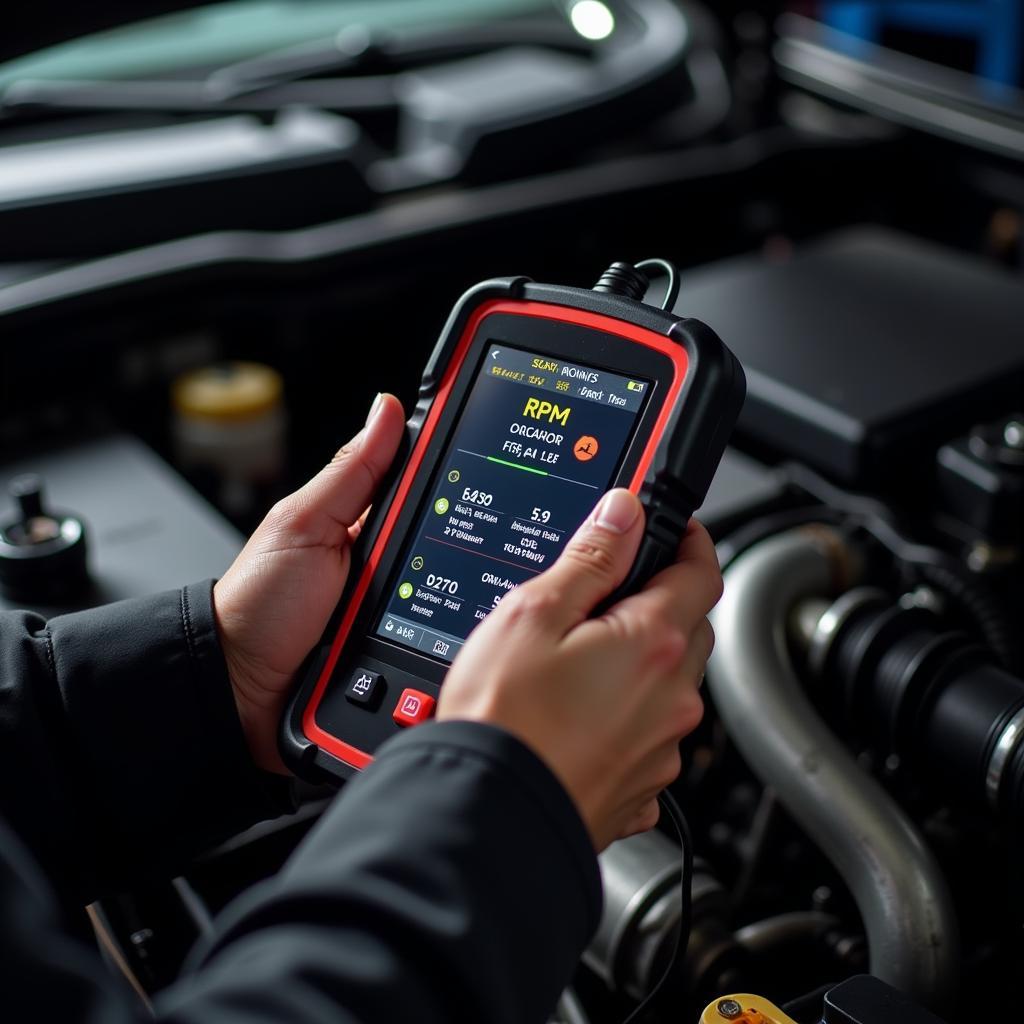Car Scanner Pids (Parameter IDs) can seem like a foreign language to many car owners. However, understanding these codes is crucial for diagnosing and fixing vehicle issues. This guide will delve into the world of car scanner PIDs, explaining what they are, why they matter, and how to use them effectively.
What are Car Scanner PIDs?
Scan tool definition PIDs are standardized codes used by car diagnostic tools to request and retrieve specific data points from a vehicle’s Electronic Control Unit (ECU). Think of them as a secret language that your scan tool uses to communicate with your car’s computer. Each PID corresponds to a specific parameter, such as engine RPM, coolant temperature, or oxygen sensor readings.
Why Are Car Scanner PIDs Important?
Car scanner PIDs are essential for effective vehicle diagnostics for several reasons:
- Accurate Diagnosis: By accessing specific data points, PIDs allow mechanics and car owners to pinpoint the root cause of a problem instead of relying on guesswork.
- Real-time Monitoring: PIDs enable you to observe live data streams from various sensors, allowing you to monitor system performance and identify issues as they occur.
- Historical Data Analysis: Many scan tools can record PID data over time, which can be invaluable for identifying intermittent problems or understanding long-term trends in your vehicle’s performance.
How to Use Car Scanner PIDs
Using car scanner PIDs effectively involves a few key steps:
- Choose the Right Scan Tool: Not all scan tools are created equal. Basic code readers may only provide generic OBD-II codes, while more advanced scan tools offer access to a wider range of manufacturer-specific PIDs.
- Identify the Relevant PIDs: Determining which PIDs to monitor depends on the specific problem you’re trying to diagnose. Service manuals and online resources can help you find the PIDs associated with your vehicle’s systems and components.
- Connect the Scan Tool: Ensure the scan tool is properly connected to your vehicle’s OBD-II port, usually located under the dashboard on the driver’s side.
- Select and Monitor PIDs: Navigate through the scan tool’s menu to select and display the desired PIDs. Most tools allow you to view multiple PIDs simultaneously.
- Interpret the Data: Understanding the data displayed requires knowledge of your vehicle’s systems and acceptable parameter ranges. Compare the readings to manufacturer specifications or known good values to identify any deviations.
Common Car Scanner PIDs and Their Meanings
Here are some examples of frequently used car scanner PIDs:
- Engine RPM (PID 0C): Displays the engine’s revolutions per minute, indicating how fast the engine is rotating.
- Vehicle Speed (PID 0D): Shows the vehicle’s speed as reported by the speed sensor.
- Coolant Temperature (PID 05): Provides the engine coolant temperature, crucial for monitoring engine operating temperature and detecting potential overheating issues.
- Oxygen Sensor Readings (PIDs 01-04): Measure the amount of oxygen in the exhaust gases, providing information about the air-fuel mixture and catalytic converter efficiency.
Tips for Effective PID Interpretation
- Baseline Readings: Establish baseline readings for key PIDs when the vehicle is operating correctly. This serves as a reference point for future comparisons.
- Data Logging: Utilize the data logging feature of your scan tool to record PID values over time, especially when diagnosing intermittent issues.
- Cross-Referencing: Compare PID readings to service manuals or online resources to understand acceptable ranges and potential causes for deviations.
Conclusion
Car scanner PIDs are powerful tools for understanding and diagnosing vehicle problems. By mastering the basics of PIDs, you can gain valuable insights into your car’s inner workings and ensure it stays in top condition. For expert assistance with vehicle diagnostics and repairs, contact the team at ScanToolUS at +1 (641) 206-8880 or visit our office at 1615 S Laramie Ave, Cicero, IL 60804, USA.

